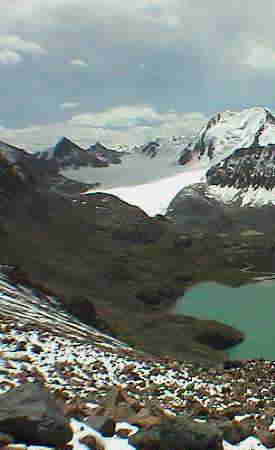 |
 |
Central and South Asia boast some of the world's most spectacular mountain landscapes (UNESCO) |
 |
The spectacular mountainous regions of Central Asia, the Hindu Kush and the Himalayas, closed for many years to visitors from abroad, now attract growing numbers of foreign tourists attracted by the unique cultures and natural beauty of these hitherto isolated areas. However, while growing tourist numbers are bringing economic opportunities and employment to local populations, helping to promote these little-known regions of the world, they have also brought challenges with them: How to ensure that local communities fully benefit from the development of tourism and that growth in tourism helps to preserve and sustain the natural and cultural riches of these regions, rather than putting them in danger? This project, the Development of Cultural and Eco-tourism in the Mountainous Regions of Central Asia and the Himalayas, generously sponsored by the Norwegian Government as well as by UNESCO Regular Programme funds, aims to establish links and promote cooperation between local communities, national and international NGOs, and tour agencies in order to involve local populations fully in the employment opportunities and income-generating activities that tourism can bring. An interdisciplinary project, drawing on the expertise of international NGOs and tourism professionals in the seven participating countries, the project is making a practical and positive contribution to alleviating poverty by helping local communities to draw the maximum benefit from their region’s tourism potential, while protecting the environmental and cultural heritage of the region concerned. Mountain areas concerned by the project include Ladakh in India, Masouleh in Iran, the Northern Tien Shen Mountains in Kazakhstan, the mountainous region around Lake Issy Kul in Kyrgyzstan, a Biosphere Reserve of the UNESCO Man and the Biosphere Programme (MAB), Humla in Nepal, Chitral and the Kalash Valleys in Pakistan and the Pamir Mountains in Tajikistan. Local project partners include the Mountain Institute and Snow Leopard Conservancy in Ladakh (India), the Aga Khan Rural Support Programme in Chitral (Pakistan) and the Kazakh Mountaineering Foundation and the Novinomad Ecotourism Development Company in Kazakhstan and Kyrgyzstan, respectively. In Tajikistan, UNESCO is working with ACTED, L’Agence d’aide à la cooperation technique et au développement, in the Pamir Mountains, and in Nepal with the Nepal Trust in Humla, one of the poorest and most isolated regions of the country. Project activities include training local tour guides, producing high-quality craft items and promoting home-stays and bed-and-breakfast type accommodation, while fully involving local communities in these income-generating activities. Recommendations on best practices, Web resources and a database on community profiles, including maps, research data and regional attractions and resources, are all included in the project. The aim is to promote these unspoilt regions of the world for foreign tourists and researchers, while helping local communities to benefit fully from the economic opportunities that their environments can bring. Russian version
|

